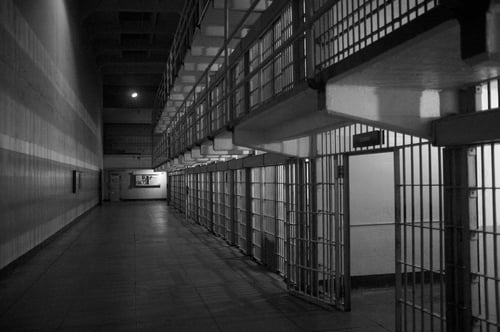
Federal prisons face numerous challenges that make it difficult to demonstrate thought leadership. Employee recruitment and training, budget cuts, general civil unrest, employee retention rates, and changes in agency protocols and operation procedures are just a few of federal prison leaders' struggles. Additionally, issues in law enforcement like increasing attrition, expanding responsibilities, and consistent decreases in resources make creating a workforce that’s more representative of their communities an increasingly arduous task.
The most challenging issues for federal prisons looking to improve workforce management include a combination of overcrowding and understaffing. These two issues compound each other, as overcrowding often exacerbates understaffing because of the difficulty and stress of supervising large numbers of inmates. These issues shouldn’t stop federal prisons from working to improve thought leadership, however. Below are several ways federal prisons can better manage understaffing and overcrowding and improve thought leadership to make a genuine difference in the lives of inmates and employees alike.
The Potential Dangers of Short Staffing
While you can likely imagine or relate to the stress of short staffing in federal prisons, the problem creates some serious issues and dangers beyond employees becoming overwhelmed. Understaffed prisons are more likely to experience poor facility safety, employee burnout, health risks, and impaired inmate rehabilitation efforts. Furthermore, short staffing in federal prisons leads to an unpleasant work environment. In the wake of COVID-19, prisons have struggled to manage staff shortages and care for inmates. The damage caused by short staffing will only worsen if federal prison leaders don’t take action to improve working conditions.
Prioritize Hiring More Staff
The first step to managing staff shortages is prioritizing hiring. While hiring is the most obvious solution to staffing shortages, the budget constraints of the criminal justice system makes hiring more staff members challenging. Additionally, staff shortages have become more common due to COVID-19, the mental and emotional exhaustion that some federal prison environments induce, and incidents of staff underpayment. The US House of Representatives has addressed the increasing issue of understaffing in federal prisons that was amplified by COVID-19.
If a federal prison has the opportunity and funds to hire more staff members, it must focus on hiring correctional officers, who are directly responsible for supervising inmates and keeping them safe, before other positions. Given the significant issues that overcrowding causes in federal prisons, hiring sufficient numbers of correctional officers is essential to caring for all inmates.
Get Help from Volunteers
Volunteers are part of the backbone of any successful correctional facility. Federal prisons that struggle with staffing shortages and overcrowding can significantly benefit from volunteers who are qualified to address specific issues and tasks. For instance, volunteers can help federal prisons by teaching classes, leading recreational activities, and providing staff support. Additionally, volunteers are crucial for mentoring inmates and helping them make positive life changes.
Reduce the Number of Inmates
The US Department of Criminal Justice recognizes the significant issues that overcrowding has caused to the health, safety, and well-being of prison inmates and staff. For example, between 1990 and 2000, the criminal justice system doubled the number of adult offenders under its control. At the start of the century, the US was already approaching 2 million incarcerated inmates, making it nearly impossible to guarantee safe housing and practices in federal prisons.
Reducing the number of incarcerated individuals in federal prisons is one of the best ways to ease staffing shortages and improve prison management. Reducing the number of inmates may be possible if federal prisons review inmates and release those who have completed a significant portion of their sentence or if courts consider alternatives to incarceration for nonviolent offenders. Additionally, the number of inmates could be reduced by increasing the use of home detention and electronic monitoring devices.
Use of Technology
In an increasingly digital world, taking advantage of technology is one of the best ways to help federal prisons manage staffing, including shortages. For example, workforce management software is being used for numerous purposes to better manage the prison workforce, such as:
- Predicting fluctuating staffing needs based on inmate bed counts
- Managing staffing and scheduling efficiently
- Using analytics to increase insight regarding workforce trends and costs, including overtime
- Automating compensation, scheduling and HR policy compliances
- Accurately capturing and submitting time and attendance results to payroll systems
- Centralizing management of training courses and results tracking
- Tracking operational and administrative information for employees and volunteers alike
While a variety of strategies are needed to address understaffing and overcrowding in federal prisons, technology such as this is an efficient, cost-effective way to help improve health and safety for everyone: inmates, staff, and volunteers.
To learn more about managing the public safety workforce, browse our blog or our ebook library.

